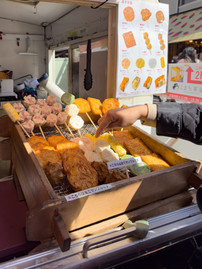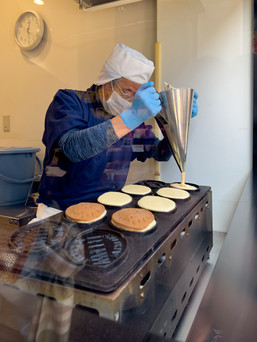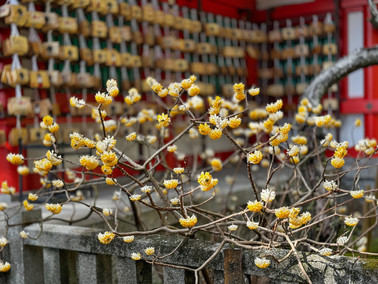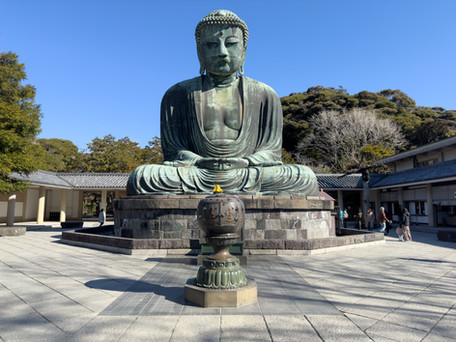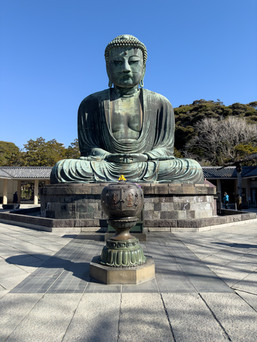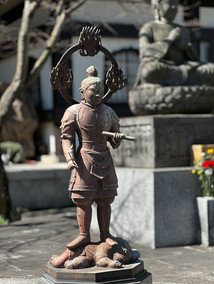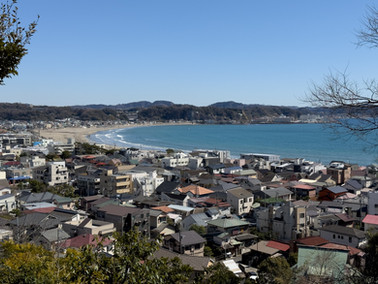Kamakura, Japan
- Dean Gagliardi
- Mar 10, 2024
- 3 min read
Updated: Mar 17, 2024
Notes:
Date - March 9 & 10, 2024
Camera - iPhone 15 Pro
Location - Kamakura (Kanagawa Prefecture), Japan
Comment - Located on Japan's eastern coast around 50km southwest of Tokyo, Kamakura is a city steeped in history, serving as the political capital of Japan during the Kamakura period from 1185 to 1333. Today, it's famous for its numerous well-preserved temples and shrines, including the iconic Great Buddha of Kamakura, as well as its beaches, food, and old streets. Just a one-hour train ride away from Tokyo, we stayed overnight at the Hotel Metropolitan Kamakura and had a great weekend exploring the town and surrounds.
The Great Buddha of Kamakura (鎌倉大仏, Kamakura Daibutsu) in Kotokuin Temple.

Walked from the hotel to Kamakura Komachi-dori Street (鎌倉小町通り). Lots of snacks 😀
Tsurugaoka Hachimangū (鶴岡八幡宮), a Shinto shrine, is literally a few mins walk from the end of Komachi-dori Street. It was founded in 1063 by Minamoto Yoriyoshi and later expanded by Minamoto Yoritomo, the founder and first shogun of the Kamakura Shogunate. The shrine is dedicated to Hachiman, the god of war and the patron deity of the samurai. It features a grand staircase called Dankazura that leads to the main hall, which is a popular spot for worship and ceremonies. The shrine complex includes several buildings, gardens, and ponds, creating a serene and picturesque atmosphere. Tsurugaoka Hachimangū is also known for its vibrant festivals, including the New Year's celebration and the Yabusame (horseback archery) event. It remains an important spiritual and cultural site in Kamakura, attracting visitors from around the world.
10 min walk to Egara Tenjin Shrine (荏柄天神社). Egara Tenjin is a Shinto shrine and is dedicated to Sugawara no Michizane, the god of learning and academic success. The shrine was established in 1182 and features a traditional architectural style. It is known for its serene surroundings and attracts students who seek blessings for their studies and exams. The shrine hosts annual festivals, including the Setsubun festival, and holds cultural significance in the local community.
Another 10 min walk to Hōkoku-ji Temple (報国寺) to end the day. Hōkoku-ji Temple (報国寺) is a Zen Buddhist temple founded in 1334, and is renowned for its beautiful bamboo grove, earning it the nickname "Bamboo Temple." The temple's main hall, known as Butsuden, houses a statue of Gautama Buddha. Visitors can explore the serene and tranquil Zen garden within the temple grounds, featuring meticulously maintained rock formations and moss-covered paths. Hōkoku-ji Temple is a popular destination for those seeking a peaceful retreat and an opportunity to experience the natural beauty of the bamboo forest.
... Day 2
Had breakfast at the Muji Cafe downstairs from the hotel, then took the Enoden line a few stops.
The Great Buddha of Kamakura (鎌倉大仏) in Kōtoku-in Temple, also known as Daibutsu, is a monumental outdoor bronze statue of Amitabha Buddha. The statue measures approximately 13.35 meters (43.8 feet) in height and weighs around 121 tons. It was cast in 1252 and originally housed inside a large temple, which was unfortunately destroyed multiple times by typhoons and earthquakes. Since 1495, the statue has been standing in the open air. The Great Buddha is an iconic symbol of Kamakura and attracts numerous visitors who come to admire its impressive size and serene presence.
5 min walk down the road to the Hasedera Temple (長谷観音). Hasedera is a renowned Buddhist temple known for its rich history and stunning natural surroundings. Built in the 8th century, it houses numerous significant cultural treasures, including a wooden statue of the goddess Kannon, which is one of the largest wooden sculptures in Japan. The temple's beautiful gardens feature a variety of seasonal flowers and plants, attracting visitors with its picturesque landscapes. Additionally, Hasedera Temple offers panoramic views of the coast and the city of Kamakura from its hilltop location, making it a popular destination for both religious pilgrims and tourists seeking tranquility and scenic beauty.
Back on the Enoden line to Inamuragasaki Park for lunch & views of Enoshima Island, and Mt. Fuji.






